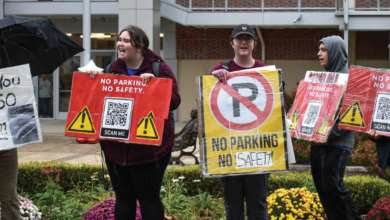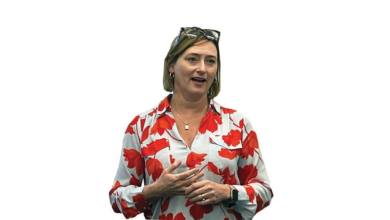
Shooting for the stars: Astrophysicist teaches lecture on building the Milky Way
By Qur’an Hansford
Big balls of hot gas floating light years away exist out of Earth’s reach. The mystery of the planets and the stars has inspired the monumental idea of space travel in hopes to uncover the unknown.
In the year 2020, the world has gone through a technological evolution, seeing astronomical advances in communication, animation and transportation that have undoubtedly exceeded expectations of late geniuses like Galileo, Isaac Newton and Albert Einstein. These progressive pushes forward granted the opportunity to explore the infinity in the stars to the depth the ground.
On March 6, guest speaker and astrophysicist Robyn Sanderson visited Rider’s Science Friday from the University of Pennsylvania. Sanderson is one of the world’s leading experts on what the galaxy looks like inside a computer. She has led astonishing simulation work that has been studied by groups all over the world to find out what the stars, gas and dust are doing in space.
Sanderson came to Rider to talk about how to build the Milky Way galaxy in a computer and how scientists can use this information to inform the public. She explained that in order to know how to build the galaxy one must know what it is made of, to what Sanderson referred to as the galaxy’s “ingredients.” The ability to capture the computer simulation of the Earth’s galaxy is through the spacecraft Gaia.
Gaia is a space observatory of the European Space Agency, launched in 2013 and expected to operate until 2022. The spacecraft is designed for astrometry: measuring the positions, distances and motions of stars with unprecedented precision. The spacecraft was an estimated $740 million.
“The motivation for this and the reason I got into this field in the first place is this view,” said Sanderson, motioning to an image of the galaxy viewed by the Gaia satellite.
“The thing to realize about this image is that it is not an ordinary picture… what they did to make this image is that Gaia measured the exact positions, brightnesses and motions of 1.2 or three billion stars,” said Sanderson.
Gaia counted up the number of stars in each tiny pixel and added up the brightness measured from all the stars in different colors, creating a pigmented star- count map of the galaxy.
Sanderson explained that computer simulating is a lot of work and it would be useless if that work did not provide a lot of solutions.
“One class of things you can do with this simulated Milky Way [galaxy] data is forecast what we will see if we go out and measure a new subset of stars, like a planning tool,” said Sanderson.
The seminar filled up a lecture hall in the Science and Technology Center on a rainy day with students, faculty and science enthusiasts in attendance.
“The event was fun and informative but the main reason why I was there was for the science class I take on Fridays. Basically, one week we read the scientific journal of the guest speaker and the next week we go to their lecture,” said senior marine science major Giana Hennelly. “One of the biggest takeaways for me was black matter and energy, the rapid expansion of space and not knowing what causes it even though it makes up 96% percent of space is an interesting concept I would like to know more about.”
The Science Fridays seminar series is a part of a class that allows students to learn about broad categories of science. This is a good opportunity for students as they prepare to register classes for the fall, being the seminar series is a one credit, pass or fail course.
“I think [the worth of Science Fridays] depends on whether there are some talks that are really interesting to listen to because there are others that are either too complex or too boring to sit through. It’s definitely an acquired taste and I usually do not go to them and I am a science student,” said Hennelly.
When entering a new millennia, the world expected flying cars and robot slaves but that is merely science fiction. Nevertheless, the world is indeed living in the future, from electric cars to computer simulations of the Milky Way galaxy.
The future is those minuscule steps forward the world takes when there is a new invention or idea, so always shoot for the stars.
The Science Fridays Series and upcoming events:
Geosciences: March 27, speaker Dr. John Higgins of Princeton University.
Chemistry: April 10, speaker Dr. Brent Schuchmann of SGS North America Inc.
Biology: April 24, speaker Dr. Sara Campbell, Kinesiology and Applied Physiology of Rutgers University.


